News
What’s So Special About Truk Lagoon?
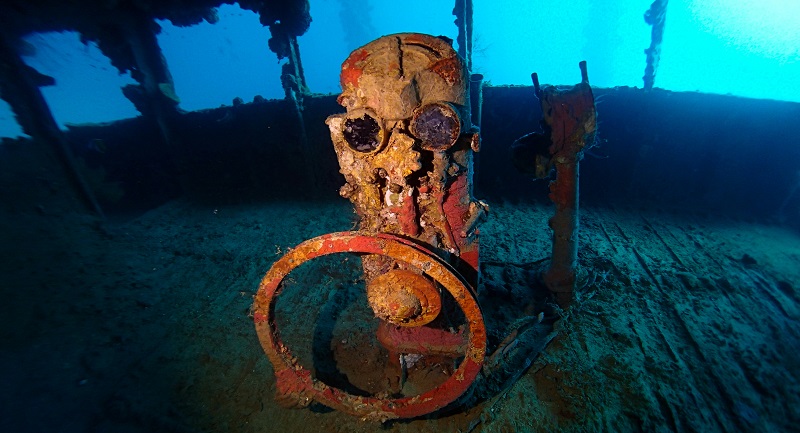
A rusty medical box, the embossed cross still visible on the front, sits atop the superstructure, now filled with a mismatched collection of bottles. We drop over the side and descend past the peeling layers of rust until we spot the inviting darkness of an open doorway. Gently cruising into the gloom, our torchlight catches on a rectangular frame.
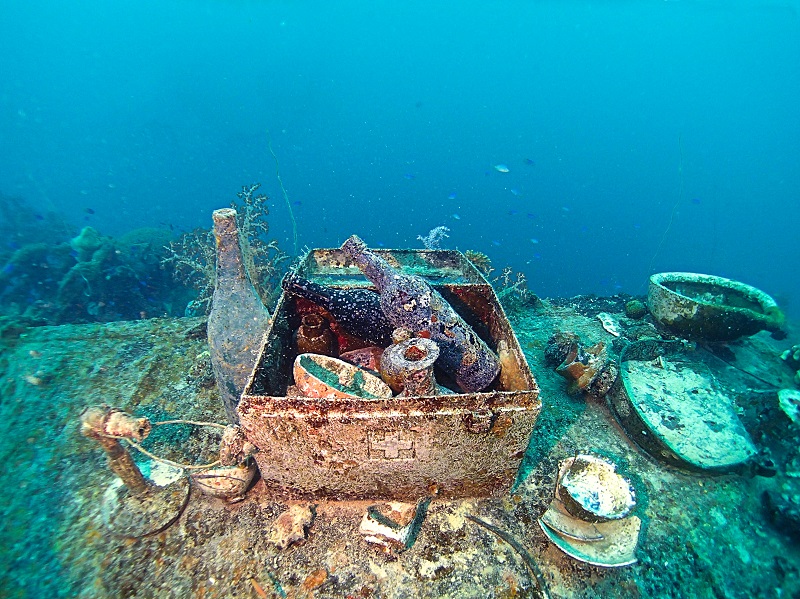
On closer inspection, we realise we’ve found the sick bay. An autoclave full of silt rests in the corner and a precariously perched drawer contains glass syringes, now yellowed, broken and dusty. The operating table, topped with a neatly stacked pile of bones serves as a disturbing reminder of those that died when this ship went down. More disconcerting perhaps is the knowledge that the deaths occurred in another part of the ship and the bones have later been relocated for photographic purposes.
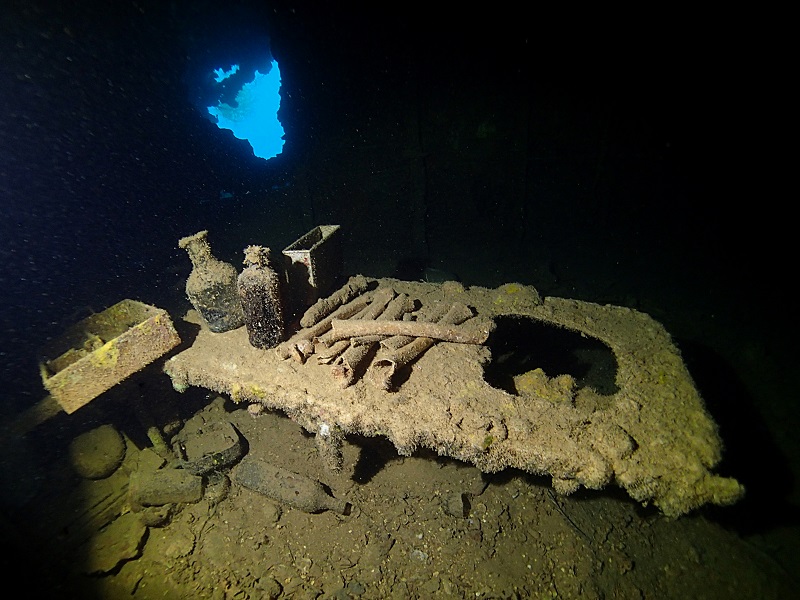
For most, Truk Lagoon is the ultimate wreck diving hotspot, a once in a lifetime destination and the pinnacle of their wreck diving aspirations. Truk virgins may assume that the diving will be something similar to Scapa, just with warm, clear water and more fish. They are at least partly correct. With temperatures around 28oC year round and viz ranging from 10 to 30 metres, it is very comfortable diving.
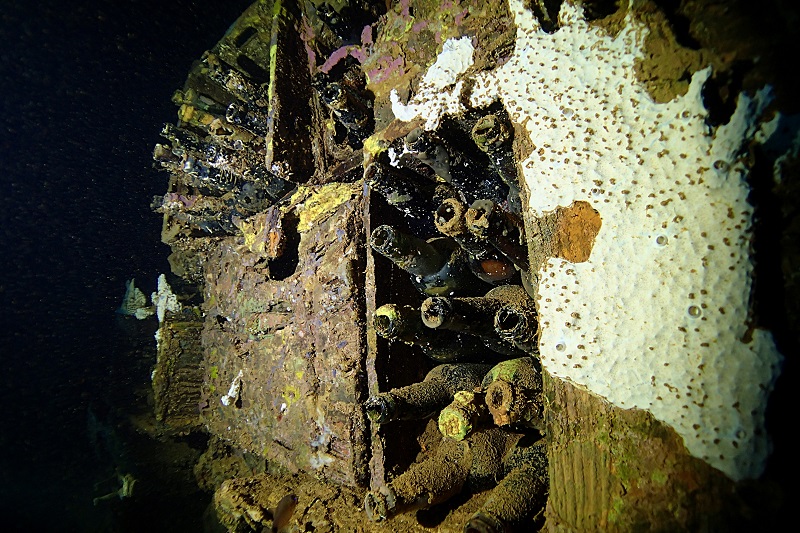
Some wrecks are so densely encrusted with coral that you can hardly make out the ship beneath and what features are visible may be obscured by clouds of fusiliers darting around in a blur of blue and gold. Jacks, barracuda and sharks also make frequent appearances, cruising around in the blue or buzzing past as you ascend the line.
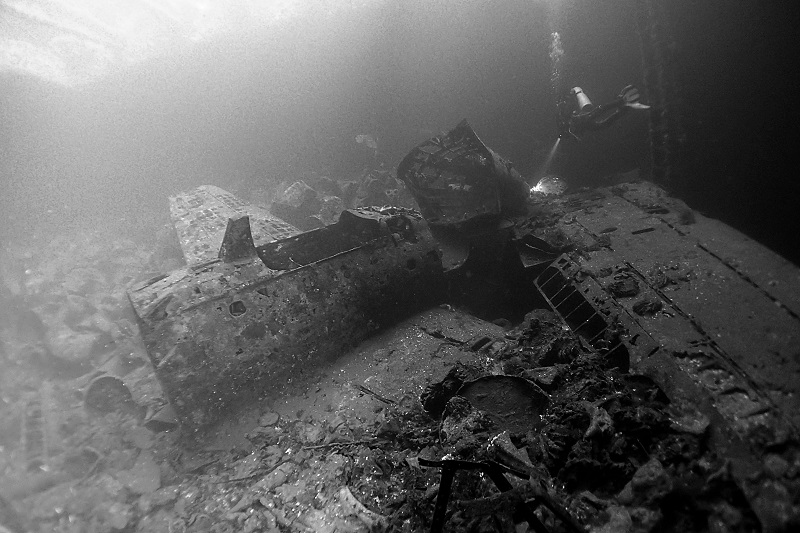
There are however no battleships in Truk. In fact, there are only two diveable warships, both destroyers. The big draw, and what you will spend most of your time diving, is the cargo ships. With minimal salvage and strict ‘no take’ rules, the contents are largely intact and there are artefacts scattered everywhere. It’s this that makes Truk stand out as the premier wreck diving location and it’s the reason so many of us make the arduous pilgrimage to this remote cluster of islands, to see the wonder for ourselves.
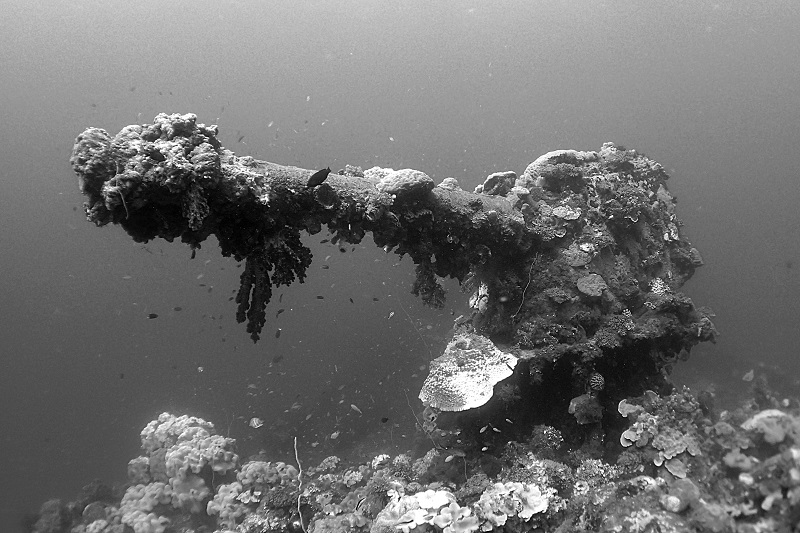
As wartime wrecks, the first thing most divers expect to see are weapons. Two depth charges and their associated launchers perch on the port side of the destroyer, Fumitsuki, with shell casings lying on the sand below. Rail tracks wind around the deck, once used for moving torpedoes to the launchers. Further forward you’ll find one such launcher, a sizeable triple barrelled affair that fired the 9m Long Lance torpedoes that you’ll see elsewhere. On the cargo ships, you’ll see deck mounted machine guns, 6 inch bow guns and artillery guns. Some of these weapons, like the wheeled field cannon on the bow of the Seiko Maru, were already obsolete before the start of the war and were used primarily as a decoration to boost morale.
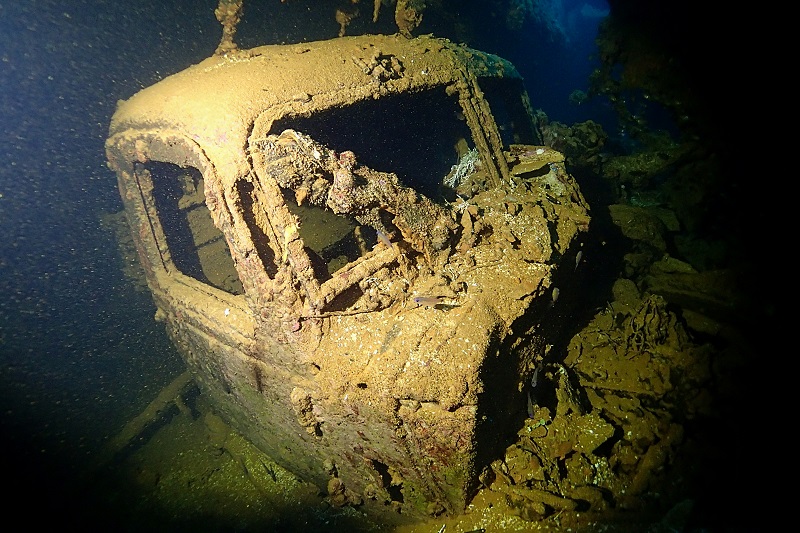
Vehicles are another popular target and the holds of these wrecks do not disappoint. The Hoki Maru carried a construction battalion, most likely destined for runway building. Drop down past the huge curved blade of the bulldozer and the tell tale cylindrical drum of the pavement roller and you’ll find a neat row of well preserved pick up trucks, ripe for exploration. On the Fujikawa Maru you’ll find numerous zero fighters. Among the mess of wings, engines, propellers and cockpits, there are a few aircraft still largely intact. Elsewhere you may see a tank or two or even some bicycles, clearly the war time chariots of choice.
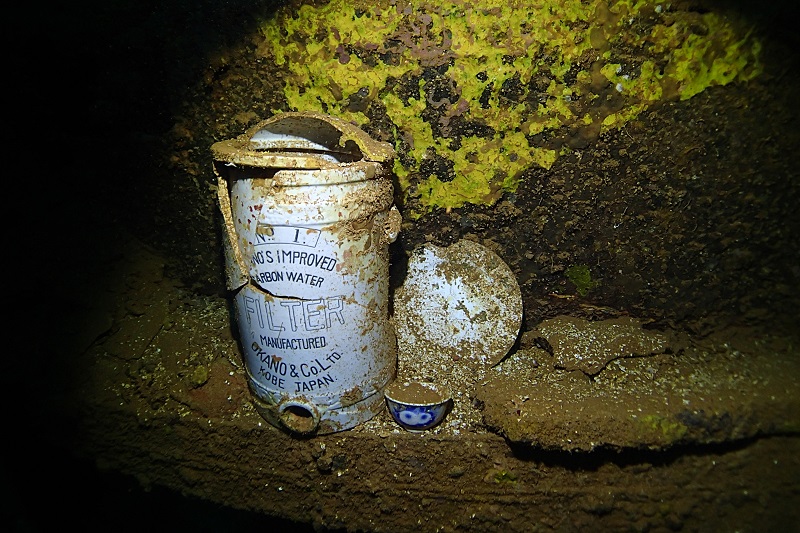
Given the remote location, the Japanese had to import all of their food, water and equipment. You’ll see essentials such as water tanks, pressure cookers and mess kits, however a surprising amount of their limited space was dedicated to beer. Bottles can be found on most of the wrecks but some, like the Rio de Janeiro Maru, have whole cargo holds full of them, still neatly packed in the remains of their wooden crates.
Then there are the wrecks themselves. Several have intact superstructures so you may be able to explore the bridge to see the helm and telegraphs or penetrate the captain’s quarters. There are ballrooms with panoramic windows, the supporting columns for the ceiling now twisted and warped; dining rooms with the metal bases of tables sprouting from the floor; and even a galley complete with stove, extractor fan and pots scattered on the counter.
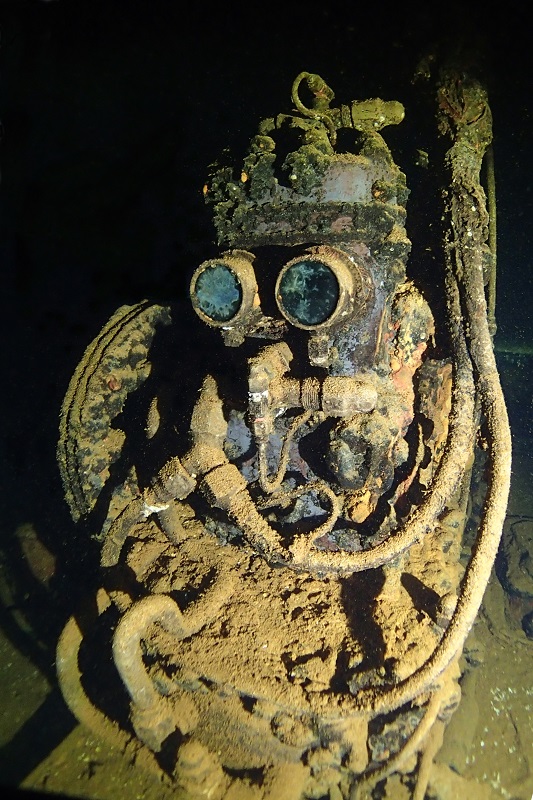 The anthropomorphic air compressor known as R2D2 can be found deep inside the machine shop of the Fujikawa Maru. Exploring further, you’ll find a perfectly preserved drill press and lathe along with cage light bulbs and fans neatly organised on the shelves of the adjacent store room.
The anthropomorphic air compressor known as R2D2 can be found deep inside the machine shop of the Fujikawa Maru. Exploring further, you’ll find a perfectly preserved drill press and lathe along with cage light bulbs and fans neatly organised on the shelves of the adjacent store room.
The engine rooms are a firm favourite and with several levels of intact machinery, in depth penetrations are the norm. Enter the torpedo hole on the Shinkoku Maru and make your way past the uniform row of generators. Gradually work your way up the narrow metal stairs, around cylinder heads and along catwalks to the skylights above. Elsewhere, the gigantic spanners may make you wonder how many men it would take to successfully tighten a nut. One engineer even died at his station and you can still see his skull fused into the metal.
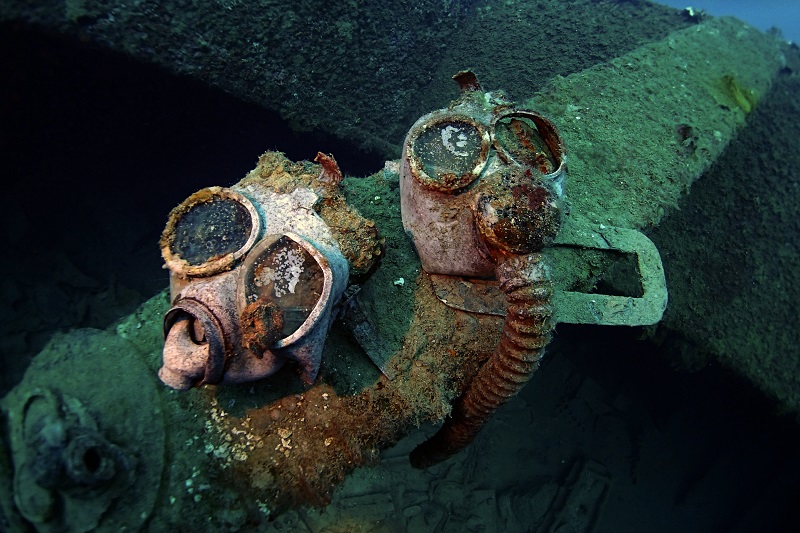
As the curators of this underwater museum, the dive guides polish algal growth from plaques and painstakingly reassemble broken ceramics and pieces of gas masks. They guide visitors through the complex maze of machinery and wreckage pointing out the stacks of periscopes, jumbled heaps of torpedoes and the particular features that make each wreck unique. These ships and their cargo give visitors an unparalleled insight into Japanese Naval life. By preserving these exhibits, the local dive operators ensure that rust hunting pilgrims from around the world will be enthralled for years to come.
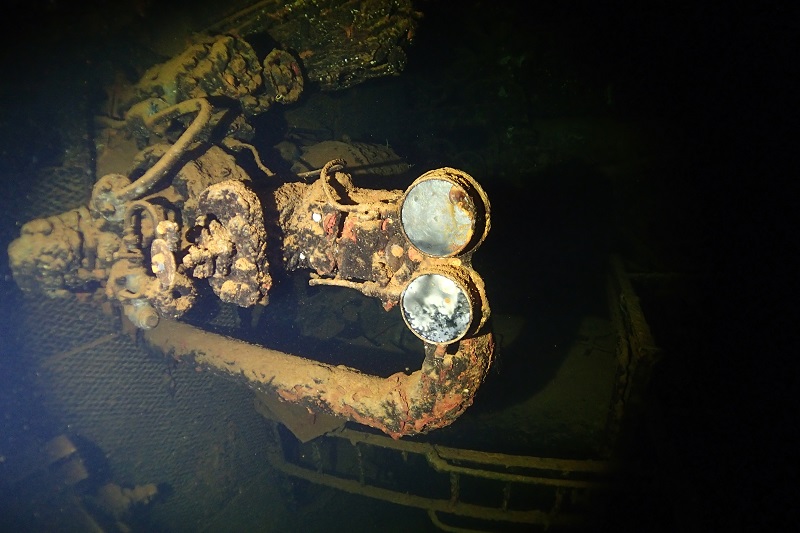
For more from Chris and Maddy visit www.adventureoclock.com
Discover more about DiveQuest diving holidays at www.divequest-diving-holidays.co.uk
News
Dive Worldwide Announces Bite-Back as its Charity of the Year

Over the next 12 months, specialist scuba holiday company Dive Worldwide will be supporting Bite-Back Shark & Marine Conservation with donations collected from client bookings to any one of its stunning dive destinations around the world. The independently-owned operator expects to raise £3000 for the UK charity.
Manager at Dive Worldwide, Phil North, said: “We’re especially excited to work with Bite-Back and support its intelligent, creative and results-driven campaigns to end the UK trade in shark products and prompt a change in attitudes to the ocean’s most maligned inhabitant.”
Bite-Back is running campaigns to hold the media to account on the way it reports shark news along with a brand new nationwide education programme. Last year the charity was credited for spearheading a UK ban on the import and export of shark fins.
Campaign director at Bite-Back, Graham Buckingham, said: “We’re enormously grateful to Dive Worldwide for choosing to support Bite-Back. The company’s commitment to conservation helps set it apart from other tour operators and we’re certain its clients admire and respect that policy. For us, the affiliation is huge and helps us look to the future with confidence we can deliver against key conservation programmes.”
To launch the fundraising initiative, Phil North presented Graham Buckingham with a cheque for £1,000.
Visit Dive Worldwide to discover its diverse range of international scuba adventures and visit Bite-Back to learn more about the charity’s campaigns.
MORE INFORMATION
Call Graham Buckingham on 07810 454 266 or email graham@bite-back.com
Gear News
Scubapro Free Octopus Promotion 2024

Free Octopus with every purchase of a SCUBAPRO regulator system
Just in time for the spring season, divers can save money with the FREE OCTOPUS SPRING PROMOTION! Until July 31st SCUBAPRO offers an Octopus for free
with every purchase of a regulator system!
Get a free S270 OCTOPUS with purchase of these combinations:
MK25 EVO or MK19 EVO with A700
MK25 EVO or MK19 EVO with S620Ti
MK25 EVO or MK19 EVO with D420
MK25 EVO Din mit S620Ti-X
Get a free R105 OCTOPUS with purchase of the following combinations:
MK25 EVO or MK19 EVO with G260
MK25 EVO or MK17 EVO with S600
SCUBAPRO offers a 30-year first owner warranty on all regulators, with a revision period of two years or 100 dives. All SCUBAPRO regulators are of course certified according to the new European test standard EN250-2014.
Available at participating SCUBAPRO dealers. Promotion may not be available in all regions. Find an authorized SCUBAPRO Dealer at scubapro.com.
More information available on www.scubapro.com.
-

 News3 months ago
News3 months agoHone your underwater photography skills with Alphamarine Photography at Red Sea Diving Safari in March
-

 News3 months ago
News3 months agoCapturing Critters in Lembeh Underwater Photography Workshop 2024: Event Roundup
-

 Marine Life & Conservation Blogs3 months ago
Marine Life & Conservation Blogs3 months agoCreature Feature: Swell Sharks
-

 Blogs2 months ago
Blogs2 months agoMurex Resorts: Passport to Paradise!
-

 Blogs2 months ago
Blogs2 months agoDiver Discovering Whale Skeletons Beneath Ice Judged World’s Best Underwater Photograph
-

 Gear Reviews3 weeks ago
Gear Reviews3 weeks agoGEAR REVIEW – Revolutionising Diving Comfort: The Sharkskin T2 Chillproof Suit
-

 Marine Life & Conservation2 months ago
Marine Life & Conservation2 months agoSave the Manatee Club launches brand new webcams at Silver Springs State Park, Florida
-

 Gear Reviews3 months ago
Gear Reviews3 months agoGear Review: Oceanic+ Dive Housing for iPhone
















